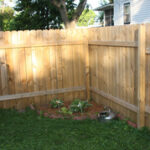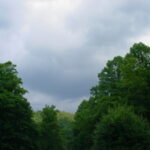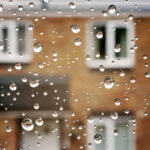Practice your measuring and make a good rainy-day game at the same time! Traditional game boards are full of measured straight lines, and as you work on laying them out just right, your measuring and calculating skills will get sharper and sharper.
1. A checkerboard has eight squares along each of its sides. The board also needs a border around the playing field. We will make it half the width of one square. This means the pine board needs to be divided into nine equal sections (eight squares plus two half-squares equals nine squares).
2. Our 1×12 pine board is 11 ¼ inches wide. Divide the pine board into nine equal sections. The first multiple of nine that is larger than 11 ¼ is 18 (9×2=18). Lay a ruler or a framing square diagonally across the board, with the left end of the ruler or square at one edge of the board and the 18-inch mark on the opposite edge of the board. From the 18-inch mark, measure back 2 inches and make a mark on your board there. Pick up the ruler or square and use it to measure from the edge of the board to the mark. The distance should be 1 ¼ inches away. Now you know that one ninth of 11 ¼ inches is 1 ¼ inches. You have just used a ruler instead of a calculator to solve your math problem! Each square on the checkerboard will be 1 ¼ inches wide and 1 ¼ inches long.
3. Since the checkerboard is going to be 11 ¼ inches (the width of the pine board) square, we need to mark a cut line this distance from the end of the board. Hold the body of the framing square against the far edge of the board, with the end of the body pointing toward the end of the board and the tongue extending across the face of the board. Align the 11 ¼ inch mark on the inside edge of the square’s body with the end of the board. Holding the square firmly in position, draw a line along the inside edge of the tongue. This single step should yield a nice square line at the proper dimension on the board.
4. Rotate the framing square so that the inside of the body rests against the far edge of the board and the inside of the tongue rests against the end of the board. Hold the square flush with the face of the board so you will be able to make layout marks there.
5. The border around the checkerboard will be half the width of a square, or 1/8-inch wide. Starting from the inside corner of the square, make a mark on the board beside the 5/8-inch line on the square’s tongue. This marks the edge of the border around the playing field.
6. Move 1 ¼ inches (1 7/8 inches total) along the tongue and make a mark there; this marks the edge of the first square. Keep marking at 1 ¼-inch increments until you end up 5/8 inch short of the near edge of the board.
7. After you have completed the layout along the tongue of the square, return to the inside corner and repeat the measuring and marking process along the body. When you reach the cut line (the first line you drew), the layout is complete.
8. Slide the framing square along the face of the board until the inside of the tongue lies along the cut line. Repeat the measuring and marking process along the inside of the tongue, again beginning with a mark at 5/8 inch and then marking at 1 ¼-inch increments. Be sure not to make your marks along the outside edge of the tongue, because its scale is offset from the one on the inside of the tongue.
9. Use any side of the square as a straightedge to connect the measured points on the end of the board with the corresponding points on the cut line.
10. Align the inside of the square’s body with the far edge of the board and the inside of the tongue with the cut line. Slide the framing square toward the end of the board, stopping at each mark you made along the far edge to square a line across the board.
11. Using a handsaw, cut along the cut line to free your game board from the pine board.
12. If your board has any rough spots, sand them smooth. If you want, chamfer the edges of your board with a block plane.
13. Paint the squares in alternating colors. Who says that a checkerboard has to be black and red? You made the board, so you get to choose the color scheme!




